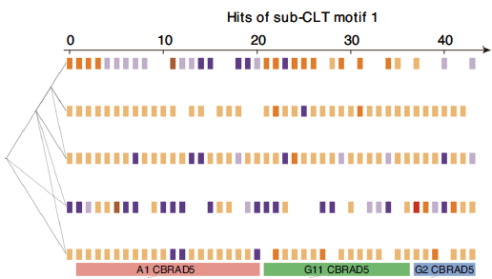Adv Sci|Professor Yang Jianrong’s team reveals the patterned structural characteristics of cell differentiation lineages
The embryonic development of mammals is akin to a precisely orchestrated cellular symphony, with its core lying in the accurate regulation of cell fate and the stable construction of tissue structures. Recently, the team led by Professor Yang Jianrong from our institute published a research paper entitled "Stereotyped Subclones Revealed by High-Density Single-Cell Lineage Tracing Support Robust Development" in Advanced Science (a top-tier journal in CAS Category 1). By simulating the early stage of primitive progenitor cell formation during embryonic lung development in vitro, the study revealed a new mechanism supporting robust development through the construction of high-coverage cell lineage trees and single-cell-level lineage tree alignment.
Members of Professor Yang Jianrong's team used an in vitro induced differentiation system to simulate the stage of primitive lung progenitor cell formation during early embryonic lung development. Meanwhile, they incorporated an optimized scGESTALT cell lineage tracing system into the cells, successfully determining the single-cell transcriptome and cell lineage barcodes of 50% of the cells in the population, and constructing cell lineage trees for four samples.

A. In vitro differentiation model.
B. Clustering of all single-cell transcriptomes.
C. Lineage tree and terminal cell types of one sample.
With the rich information from the lineage trees, the researchers revealed the differentiation order of multiple key signaling pathways during development and identified a set of genes that may support developmental robustness by maintaining the similarity of expression levels among closely related cells (also known as "transcriptional memory"). More importantly, using the lineage tree alignment algorithm developed earlier by the research group, the researchers found a large number of subtrees with similar structures and nearly identical terminal cell compositions on the lineage trees, namely stereotyped subtree motifs.

A typical subtree pattern appeared 43 times (upper x-axis) in three differentiated samples (lower x-axis). These subtrees have similar tree structures (left) and similar terminal cell compositions (middle color blocks; each column is from one subtree, the color of the block represents the cell type, and blank spaces indicate that the subtree lacks this cell).
Further analysis found that stereotyped subtrees can ensure that when death occurs in terminal or ancestral cells, the population generated by cell proliferation and differentiation still retains various cells with a high probability and in appropriate proportions, thereby supporting the robustness of development. There are some well-known stereotyped subtrees in the late stage of multicellular organism development, such as meiosis of germ cells and tactile bristles of Drosophila. This study is the first to use a DNA barcode-based lineage tracing system to prove that stereotyped subtrees also exist in the early stage of development and the first to propose the potential contribution of stereotyped subtrees to robust development.
Postdoctoral fellow Zhang Xiaoyu, doctoral student Li Zizhang, and master student Chen Jingyu from Professor Yang Jianrong's team are the co-first authors of the paper, and Professor Yang Jianrong is the corresponding author. This research was supported by the National Natural Science Foundation of China, the Advanced Medical Technology Research Center of the First Affiliated Hospital of Sun Yat-sen University, and the Ministry of Science and Technology of China.
Original article link: https://advanced.onlinelibrary.wiley.com/doi/full/10.1002/advs.202406208
Links to related papers on cell lineage by Professor Yang Jianrong's team:
Reconstructing cell lineage trees with genomic barcoding: approaches and applications. Journal of Genetics and Genomics. 2024: https://doi.org/10.1016/j.jgg.2023.05.011
Phylogenetic Comparative Analysis of Single-Cell Transcriptomes Reveals Constrained Accumulation of Gene Expression Heterogeneity during Clonal Expansion. Molecular Biology and Evolution. 2023: https://doi.org/10.1093/molbev/msad113
Alignment of Cell Lineage Trees Elucidates Genetic Programs for the Development and Evolution of Cell Types. iScience. 2020: https://doi.org/10.1016/j.isci.2020.101273


